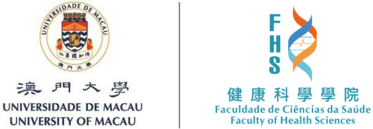
星期二、五 10:30 – 11:30
| 名稱 | 職稱 | 辦公室 | 電話 | 電郵 |
|---|---|---|---|---|
| 李昂 | 博士後研究員 | E12-3019 | +853 8822 2736 | liang@um.edu.mo |
| 黃怡雯 | 研究助理 | E12-3019 | +853 8822 2736 | yiwenhuang@um.edu.mo |
| 董志強 | 研究助理 | E12-3019 | +853 8822 2736 | zhiqiangdong@um.edu.mo |
| 司文婷 | 博士生 | yc57631@um.edu.mo | ||
| 鍾詠賢 | 博士生 | |||
| 黃怡雯 | 博士生 | yc57650@um.edu.mo | ||
| 苗正強 | 博士生 | E12-3019 | +853 8822 4232 | |
| 藍清 | 博士生 | E12-3019 | +853 8822 4232 | |
| 鍾詠賢 | 博士生 | N22-3004 | +853 8822 4131 | |
| 吳聘 | 博士生 | E12-3019 | +853 8822 2736 | |
| 李申 | 博士生 | E12-3019 | +853 8822 2736 | |
| 畢麟 | 博士生 | |||
| 劉小鳳 | 博士生 |
| Education | |
| PhD | Department of Genetics, University of Melbourne, Australia (2007) |
| BSc (1st Class Hons) | Department of Genetics, University of Melbourne, Australia (2002) |
| BSc | Faculty of Science, University of Melbourne, Australia (2001) |
| Diploma | Biotechnology, Ngee Ann Polytechnic, Singapore (1999) |
| Positions | |
| 2020 – Present | Associate Professor, Faculty of Health Sciences, University of Macau |
| 2013 – 2020 | Assistant Professor, Faculty of Health Sciences, University of Macau |
| 2008 – 2013 | Postdoctoral Research Fellow, Department of Biochemistry and Molecular Pharmacology, Harvard Medical School, USA |
| 2007 – 2008 | Postdoctoral Research Fellow, Department of Genetics, The University of Melbourne, Australia |
| Research Interests |
My research focuses on two broad aims:
Why study Fungal Pathogenesis? Fungal pathogens are ubiquitous in the environment, but they usually do not post serious threats to people with a healthy immune system. However, fungal pathogens can cause life-threatening diseases in individuals with a compromised immune system. In recent years, the number of immuno-compromised individuals is escalating as chemotherapy, bone marrow-transplant and organ-transplant therapies are becoming common medical procedures. Prevention and treatment of fungal infections has become a major clinical challenge. The situation is exacerbated by the lack of effective anti-fungal therapies with fatality rates of certain fungal infections being as high as 100%. Therefore, understanding fungal pathogenesis has immense medical implications and will provide valuable information towards development of new effective and life-saving anti-fungal treatments. Why study Transcription Regulation? Transcription is an essential molecular process whereby stored biological information is retrieved from the genome of living organisms. Proper and precise control of transcription is of fundamental importance to biology. Defects in this process are linked to many human diseases including cancers. The molecular mechanisms of transcriptional regulation in eukaryotic organisms are remarkably conserved from humans to fungi. In fact, much of our current knowledge of transcription regulation has come from fungal studies. Through studying transcription regulation in fungi, my research aims to provide important new information that is directly relevant to transcription regulatory mechanisms in humans. |
| Representative Publications |
Journal Publication
Book Chapter
|
| Full publications list |
| Awards | |
| 2013 | Marine Biological Laboratory Scholarship, Marine Biological Laboratory, USA |
| 2009 – 2010 | Croucher Postdoctoral Fellowship,The Croucher Foundation, Hong Kong |
| 2003 – 2006 | International Postgraduate Research Scholarship (IPRS), The Australian Government |
| 2003 – 2006 | Melbourne International Research Scholarships (MIRS), The University of Melbourne, Australia |
| 2001 – 2003 | Howitt Natural History Scholarship, The University of Melbourne, Australia |
| 2003 | The Department of Genetics Postgraduate Scholarship, The University of Melbourne, Australia |
| 2002 | The Department of Genetics Honours Scholarship, The University of Melbourne, Australia |
| 2002 | Dean’s Honour List – B.Sc.(Hons), Faculty of Science, The University of Melbourne, Australia |
| Professional Activities |
|

